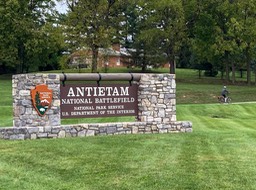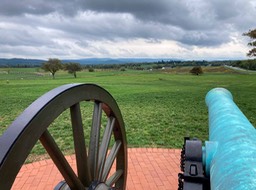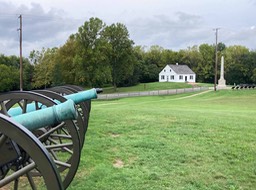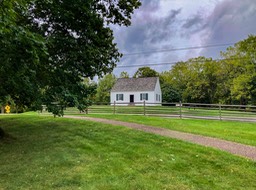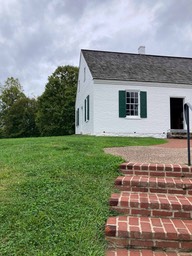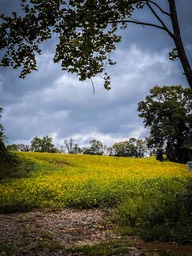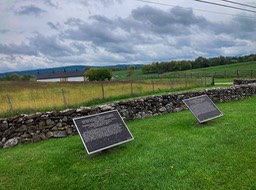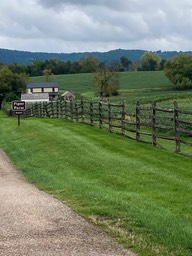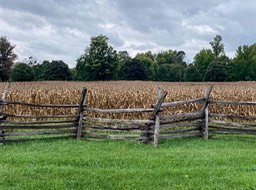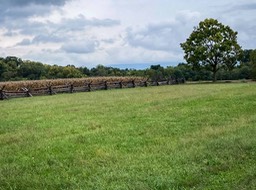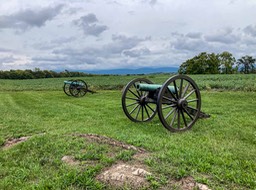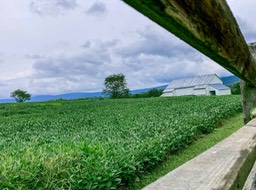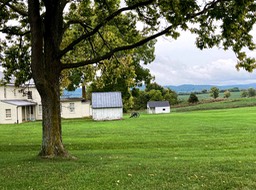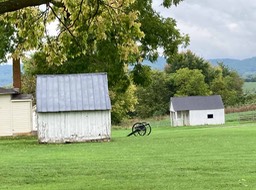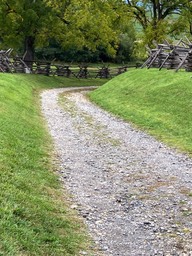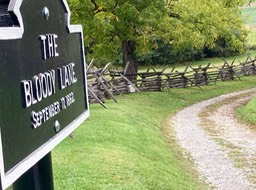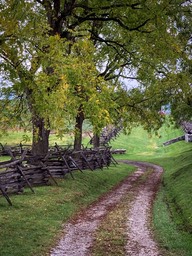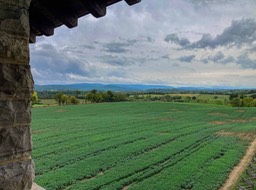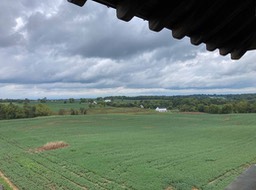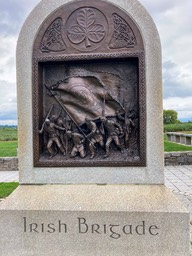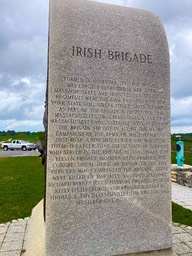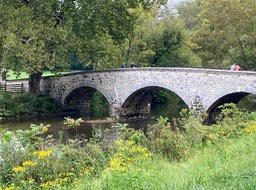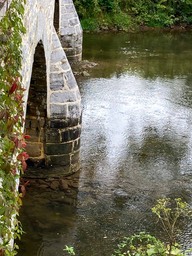On our third day, we biked into Sharpsburg, Maryland near the Antietam National Battlefield. The park's brochure described Civil War battle's significance as, “the bloodiest day in American history. 23,000 soldiers were killed, wounded or missing after twelve hours of savage combat on September 17,1862. The Battle of Antietam ended the Conferderate Army of Northern Virginia’s first invasion and led Abraham Lincoln to issue the preliminary Emancipation Proclamation.”
In the Visitor’s Center, we read nurse Clara Barton’s description of the night before the battle: "There was an impending sense of doom. We knew, everyone knew, that two great armies of 80,000 men were lying face to face, only waiting for dawn to begin the battle. It gave a terrible sense of oppression."
We rode the twelve mile loop passing green farms and fields. The park service has restored the historic fences that existed at the time of the battle. Cannons mark the spots where the northern and southern troops placed their artillery. The barrels are originals from the Civil War, the wheels and carriages have been rebuilt.
We stopped at Dunkers Church, named for the local German Baptist Brethen who “dunked” their members in baptism. A sign marked Mumma’s Farm, the only farm destroyed during the battle as the family fled. The Confederates burned the farm to prevent its use by Union sharpshooters.
We quietly contemplated the hallowed ground of the cornfields where more than 25,000 soldiers fought. By 9:30 am thousands lay dead and dying. Confederate General John Bell Hood wrote: “It was here that I witnessed the most terrible clash of arms, by far, that has occurred during the war.”
Nearby, we walked along the Sunken Road where thousands of men shot at eachother near point-blank range. 5500 men were killed or wounded. The sign marking the road since then is Bloody Lane.
Ninety six monuments, primarily for Union soldiers from different states dot the park. One monument was dedicated to the Irish Brigade, composed mainly of Irish immigrants and led by Irish-born General Thomas Francis Meagher. These Union soldiers fought valiantly at the Sunken Road suffering 60% casualties.
We ended our tour of the battlefield at Burnside's Bridge, named for Union General Ambrose Burnside. At the stone bridge crossing Antietam Creek, 500 Confederate soldiers from Georgia managed to hold the line for several hours, preventing 12,000 Union soldiers from crossing the bridge. On the third attempt the Union succeeded in seizing the bridge and the strategic high ground.
The battle of Antietam was an important turning point early in the war. It gave the Union a much needed victory after several defeats, and stopped the South’s advance into the North. In addition, it spurred Lincoln to issue the Emancipation Proclamation, making the Civil War a fight to liberate slaves, in addition to a war to preserve the union.
Click on any of the photo thumbnails below to see the full size photos from Antietam Battlefield.
